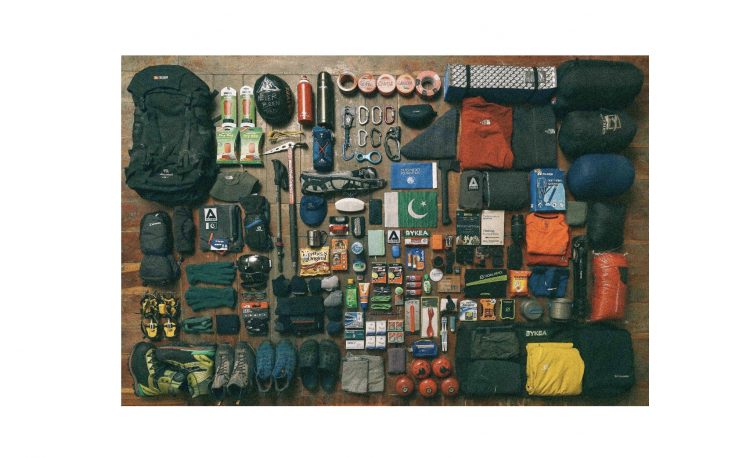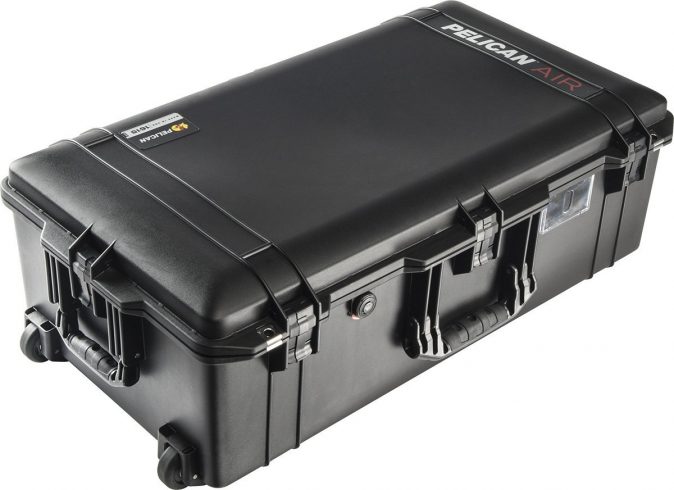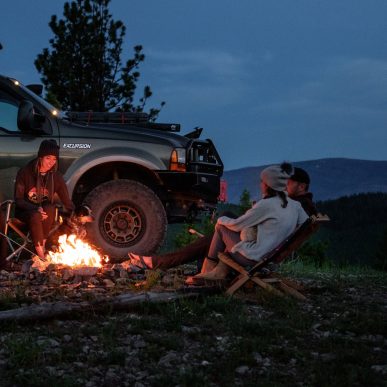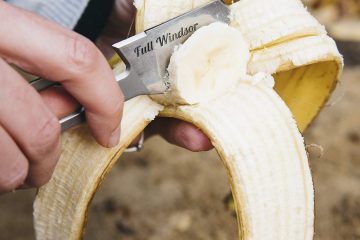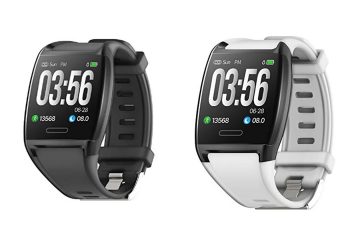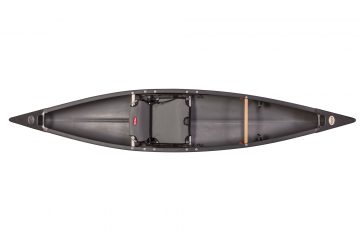Sport climbing is a fun activity that many people enjoy. It lets you simply pick up your ropes, pack your gear, and march forward to hit the crag. But there’s a lot to choose from when it comes to all of the gear. It may seem daunting at first, but it will become incredibly easy with time.
To make sure you are settling on the right climbing equipment — both for enjoyment and for safety — there’s a specific sport climbing gear list you should check out. Here’s our comprehensive list of the 13 best sport climbing gear that only the pros know.
Contents
- Sport Climbing Gear – The Basics
- Belay Device
- Runners and Ropes
- Backpacks
- Carabiners and Quickdraws
- Headlamp and Lighter
- Route Guidebook
- Emergency Shelter
- Personal Basics
- Cell-Phone or Walkie-Talkie
- Dry Foods and Water
- Extra Clothing
- Insect Repellent
- Protective Gear
- Knife and Tranquilizer
- Additional Tips for Packing Your Sport Climbing Gear the Right Way
- Key Takeaway
- FAQs
- What do you need for the sports climbing rack?
- Do you need quickdraws for sports climbing?
- How do you pack climbing gear?
Sport Climbing Gear – The Basics
Whether you are an expert rope climber or a hiking newbie, there are some basic climbing tools that you must have in your possession. It will not only keep you well equipped for any situation but will also prepare you better for your experience in the woods or mountains.
For the finest climbing gear, you may visit this 2022 Buying Guide which guarantees high-quality climbing equipment for beginners to advanced climbing enthusiasts.
-
Belay Device
A belay device is used to control a rope when top-roping or lead climbing during rock climbing.
It grips the rope when the climber falls and stops the fall with the minimal physical effort from the belayer. Therefore, these devices are designed to ensure that a climber is safe while climbing.
If you climb without the right belay device, a larger or heavier partner can pull you off balance or even off the cliff entirely.
-
Runners and Ropes
Sport climbers know the value of having good runners and ropes. You won’t be able to keep climbing without these tools.
Runners and ropes are used to secure climbers and their gear to the rock. When you are climbing, one end should always be attached to you while the other end should be wrapped around the rock.
These tools can mean the difference between life and death, and a climber should never purchase one without doing their homework. So, make sure to choose high-quality, strong, and durable ropes and runners.
-
Backpacks
You must equip yourself with standard backpacks for the best sports climb. The essential packs include,
-
Rope Bag: These bags are best for organizing ropes.
-
Chalk Bag: These bags are easy to carry as they stick to your body and carry the handy materials you might need during your trip.
-
Day Pack: These bags make great storage for packing all your day climbing trip essentials.
-
Carabiners and Quickdraws
Carabiners and quickdraws are designed to keep climbers safe and no sport climbing gear list is complete without these tools.
A quickdraw is an extension to a climbing rope that quickly connects the rope to anchors. This tool is indispensable for individuals who rely on bolts and other traditional protection.
On the other hand, climbers use carabiners to latch ropes and other equipment. This tool is also used to create top rope anchors, often webbing.
-
Headlamp and Lighter
Don’t forget to take a headlamp while going on a climbing trip. Even though you are just going to stay there during the daytime, you must carry them with you.
Sometimes, you might encounter dangerous animals that can be scared away using a lighter. You might also have to visit some dark places where the headlamp would be needed.
-
Route Guidebook
Inevitably, you won’t always be able to rely on the built-in navigation of your smartphone while out on an adventure.
If you can’t access Google Maps, packing a printed map and compass can save you from getting lost, even in places with existing cell phone reception.
-
Emergency Shelter
Emergency shelters should also be carried in the mountains and forests, especially in unpredictable weather.
These shelters are designed for extreme weather conditions and can fit easily in your backpack. They are easy to carry, lightweight, and easy to set up.
Personal Basics

There are also several personal basics that all climbers should take with them while they’re climbing:
-
Cell-Phone or Walkie-Talkie
A cell phone is a must-have for any climber, but in the case of poor reception or limited data plan, walkie-talkies can be a handy alternative.
Emergency services and other professionals have long used these devices when they need to be in constant contact.
Walkie-talkies are lightweight, easy to operate, and don’t need an internet connection. Just switch them on, press a button, and you’re ready to talk.
-
Dry Foods and Water
Cooking while you are climbing is not feasible. So, it is essential to pack some ready-to-eat foods. It’s also recommended that you bring enough water as climbing is tiring.
-
Extra Clothing
Bring extra clothing in case the weather takes a turn for the worse. A sudden downpour can get you wet, cold, or both.
With extra clothing, you’ll be able to stay warm and dry and make it back home before long, even in inclement conditions.
-
Insect Repellent
To have a pleasant climbing experience, you must carry insect repellent. Insects can spread dangerous diseases that can cause harm to humans. Protect yourself, your family, and your friends by making sure everyone packs bug spray when they plan to walk in the woods.
-
Protective Gear
Make sure you have your own gear before attempting a climb in the woods. This is because these protective items can make a significant difference in terms of safety.
To give you a better understanding of the protective gear you should carry, here is a quick checklist:
-
Helmet: You should put a helmet on when climbing mountains to protect your head if you fall down.
-
Binocular: A binocular can help you see the long distances of a sports climb, making it easier to spot potential hazards and route markers.
-
Climbing boots: Climbing boots grip better on the mountain’s surface so you can haul yourself up the slope with ease.
-
First-aid supplies: First-aid supplies are effective ways to treat injuries quickly and recover on the go. They’re compact, accessible, and easy to use.
-
Gloves: Gloves will protect your hands in all types of conditions – from extreme heat to extreme cold and other natural substances.
-
Knife and Tranquilizer
When you’re climbing mountains, you never want to be surprised by an unexpected animal encounter. That’s why it’s essential to carry a tranquilizer and a knife.
Although it’s not a weapon in the traditional sense, it can help you catch a meal or pass through dangerous territory without getting hurt.
Additional Tips for Packing Your Sport Climbing Gear the Right Way
Don’t just toss everything in a backpack while packing for a climbing excursion. You need to plan exactly how you’ll strap your gear to yourself and how it will fit inside your bag.
So, here are some additional tips for packing your climbing gear the right way:
-
Use pegboards, hooks, and baskets to organize your climbing gear.
-
Purchase a small backpack for carrying only the handy essentials.
-
Never pack the heavy items in the front part of your backpack.
-
Have a backpack with a few rooms to organize your gear well.
-
Pack the dry foods in a separate sack, then put them inside your daypack.
Key Takeaway
Climbing gear is a must-have on a journey through the mountains or forests. To experience the mountains to the fullest, you need to buy the right equipment and pack it correctly. Otherwise, you might face unwanted situations that can get quite dangerous.
We’ve put together a sport climbing gear list that includes everything essential. This checklist is a brilliant guide for anyone looking to start climbing. It may save you time and assist you in preparing for your next adventure well.
So, it’s time you pack your hiking backpack with these essentials and make your climbing safe, secure, and enjoyable.
FAQs
-
What do you need for the sports climbing rack?
You’ve already got a ton of items in this climbing rack, but here are a few more to add:
-
Standard hiking backpack.
-
Quickdraws.
-
Helmet.
-
Ropes and rods.
-
Climbing shoes.
-
Sunscreen.
-
Harnesses.
-
Lighter and knife.
-
Do you need quickdraws for sports climbing?
We recommend that sports climbers carry at least 12 quickdraws in their climbing pack. That’s enough for 30 meters of climbing and to handle almost any route.
Quickdraws are also useful for setting up top ropes and can even be used to climb certain areas where bolts have been installed in the past.
-
How do you pack climbing gear?
Before you even start packing, make sure that you have a sturdy and strong backpack. It’s essential to pack everything in the backpack you need during your climb. Most importantly, make sure it’s not too heavy.
You’ll also want to bring as many essentials as possible for your week-long climbing adventure, including snacks, water bottles, sunscreen, boots, etc. Organize these items in the bag to cut down on space and keep them close at hand.
As you add more gear to your backpack, pack it in a logical order — saving lighter items in the back while heavier items go at the bottom to help stabilize the load.
Photo Credit https://unsplash.com/photos/z9F_yK4Nmf8
